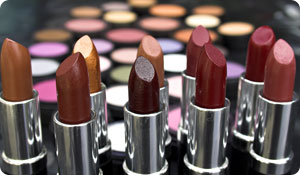
Gluten-sensitive enteropathy, commonly known as celiac disease (CD), is a chronic intestinal disorder caused by a hypersensitivity to gluten proteins found in wheat, rye barley and possibly oat products. But it's not just the gluten-containing foods that can cause CD sufferers' problems. Some dermatologists believe that topically applied gluten-containing lotions, creams, deodorants, perfumes, soaps, shampoos and even lipsticks and facial foundations are absorbed by the bloodstream and can adversely affect people with CD as well.
While ingesting gluten proteins doesn't cause an immune response in healthy people, the immune system of people with CD is abnormally activated by gluten, triggering an inflammation response in the small intestine. Eventually, this autoimmune response results in partial or complete flattening of the villi, the tiny, hair-like projections that absorb nutrients from foods. Without healthy villi, people can become malnourished, setting off a constellation of maladies from skin rashes, chronic fatigue, bone loss and diarrhea to reproductive disorders and lymphoma, a cancer of the lymph system.
While classic symptoms of celiac disease include chronic diarrhea or constipation, abdominal pain, gas and bloating, other symptoms may occur in places other than the digestive tract and, therefore, not be associated with CD. Here are other signs to watch out for:
- Loss of appetite
- Delayed growth
- Fatigue
- Anemia
- Weight loss
- Irritability
- Depression
- Arthritis
- Missed menstrual periods
More than two million people in the United States have CD. If you are experiencing symptoms of celiac disease, talk to your doctor. Blood tests are available to screen for higher than normal levels of certain autoantibodies-proteins that react against the body's own cells or tissues.
Living Gluten-Free
The only treatment for celiac disease is the complete elimination of wheat, rye, barley and possibly oat grains from the diet. That means not just diligently reading food labels looking for those ingredients, but paying attention to the ingredients in your beauty products as well. If the ingredients are not listed on the label of the cosmetics you use, contact the manufacturers. They should be able to provide you with a list of ingredients.
And with awareness of celiac disease rising, many cosmetic companies now guarantee that their products are gluten-free.
Here are some common ingredients in cosmetics and shampoos to avoid:
- Hydrolyzed wheat protein
- Wheat germ
- Hydrolyzed malt extract
- Stearyldimoniumhydroxypropyl
- Yeast extract





